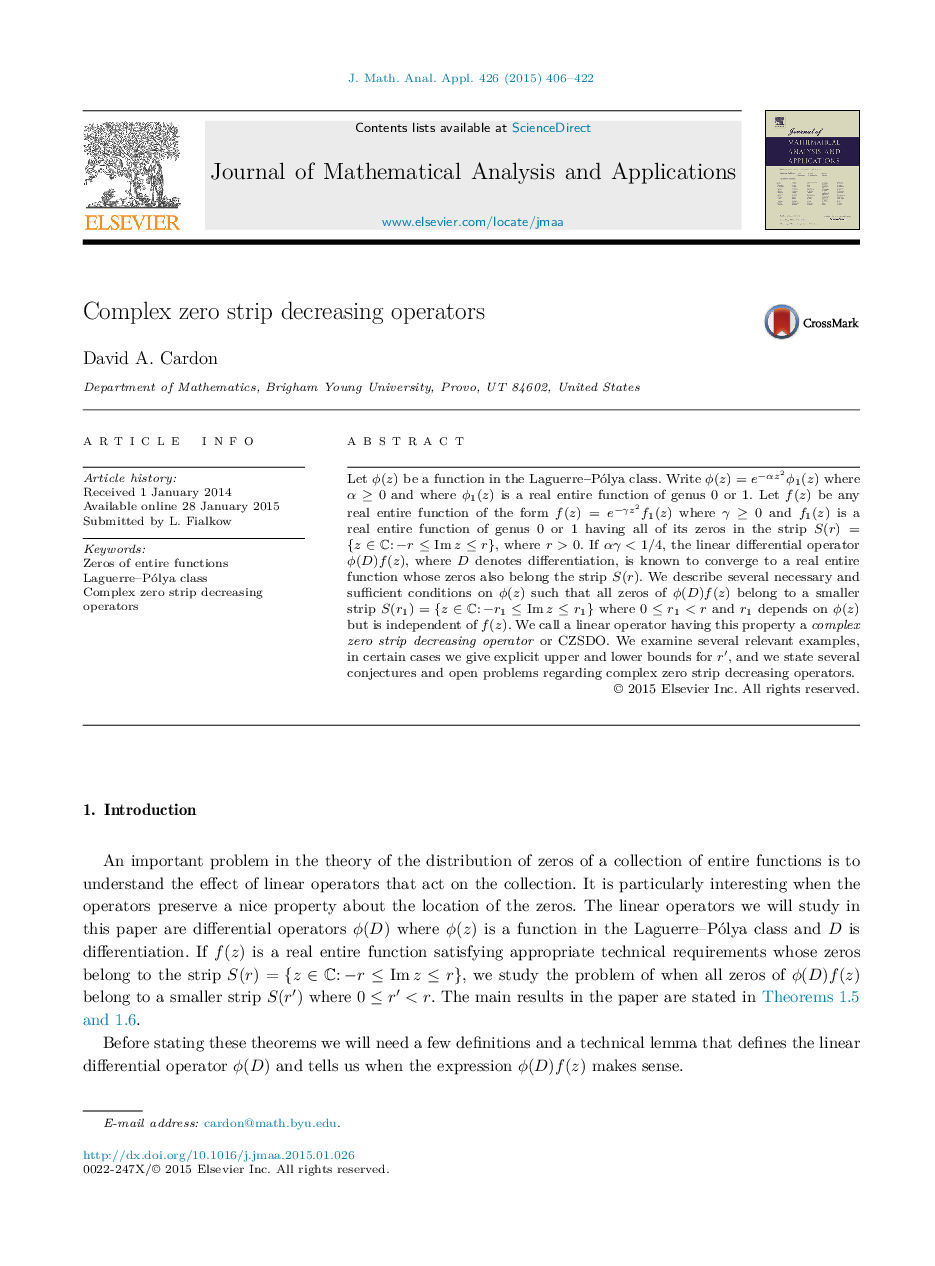| Article ID | Journal | Published Year | Pages | File Type |
|---|---|---|---|---|
| 4615509 | Journal of Mathematical Analysis and Applications | 2015 | 17 Pages |
Let ϕ(z)ϕ(z) be a function in the Laguerre–Pólya class. Write ϕ(z)=e−αz2ϕ1(z)ϕ(z)=e−αz2ϕ1(z) where α≥0α≥0 and where ϕ1(z)ϕ1(z) is a real entire function of genus 0 or 1. Let f(z)f(z) be any real entire function of the form f(z)=e−γz2f1(z)f(z)=e−γz2f1(z) where γ≥0γ≥0 and f1(z)f1(z) is a real entire function of genus 0 or 1 having all of its zeros in the strip S(r)={z∈C:−r≤Imz≤r}, where r>0r>0. If αγ<1/4αγ<1/4, the linear differential operator ϕ(D)f(z)ϕ(D)f(z), where D denotes differentiation, is known to converge to a real entire function whose zeros also belong the strip S(r)S(r). We describe several necessary and sufficient conditions on ϕ(z)ϕ(z) such that all zeros of ϕ(D)f(z)ϕ(D)f(z) belong to a smaller strip S(r1)={z∈C:−r1≤Imz≤r1} where 0≤r1
